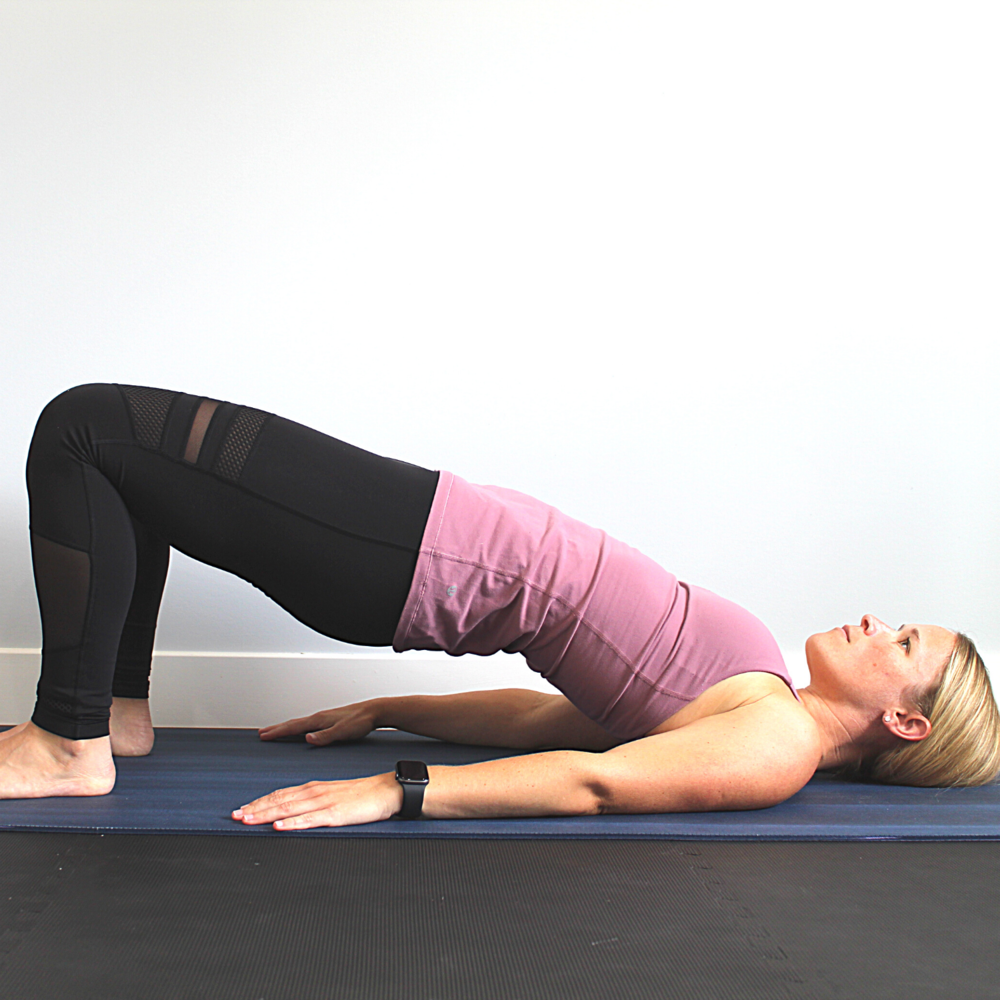I work with so many clients who want to learn how to do pelvic floor exercises for prolapse. Pelvic floor prolapse (PFP) is a very common condition, in which the uterus, bladder, rectum, or other tissues and organs drop into or out of your vagina. It can be uncomfortable and lead to other issues, not the least of which is embarrassment and a lowered quality of life. Hopefully, that stops here!
Understanding Pelvic Floor Prolapse
Pelvic floor prolapse (also called pelvic organ prolapse) affects about 3% of women in the U.S. (source). To understand this condition, it’s helpful to understand what the pelvic floor is. Namely, it’s the critically important hammock of muscles that support your reproductive organs, along with your bladder, small bowel, and rectum. As such, it also maintains bladder and bowel control, contributes to sexual sensations, and supports pregnancy.
Like we’ve covered, pelvic floor prolapse occurs when the bladder, uterus, rectum or other tissues or organs drop into or out of the anus or vagina. This happens when the pelvic floor muscles are too weak, sometimes due to pregnancy and vaginal childbirth, higher body mass index, chronic constipation, or hysterectomies.
Symptoms of pelvic floor prolapse will depend on the severity of the prolapse. You may or may not experience pain, which may or may not be severe. You may just notice a slight bulge, or you may have issues like incontinence, constipation, or pain in your pelvis or low back.
If you think you may be experiencing PFP, please speak to your doctor. And please know that we can use gentle yoga to help alleviate pain and discomfort, and well as to strengthen and support your pelvic floor in general.
Yoga for Pelvic Floor Prolapse
When I teach yoga for pelvic floor prolapse, I like to focus on both the pelvic floor and the hips. The hips are really important for pelvic floor muscles, because one of hip rotator muscles attaches onto them. So exercises that work with both the abs and the hips can bring lots of positive results.
My preferred exercises for PFP also focus on the interabdominal system, which is also so important for pelvic floor health.
Before you get started with yoga for PFP, remember that with all these exercises (and with yoga in general), we really want to understand what’s going on with your body. That means moving slowly and gently, and using your breath.
If you’ve been feeling pressure or pain on the pelvic floor, and/or if you’ve simply noticed that your hips are really tight, this is the perfect class for you:
Before getting started, please remember that with all these exercises, we really want to understand what’s going on with your body. That means moving slowly and gently, and using your breath.
Gentle Breathing for PFP
I always make sure my students are focusing on their breath, and this is especially true for yoga for pelvic health. We do this by working on 360° breaths. When we breathe in, our diaphragm moves down and we expand on all sides of our rib cage. When we exhale, the diaphragm recoils and comes back up, gently pulling on our lower abs and pelvic floor muscles. Try to exhale like you’re blowing through a closed straw, and you should feel that connection in your lower body.
Your breath is going to be the most important thing in all yoga for pelvic floor exercises. When you inhale, think about gently opening up your pelvic floor muscles. And when you exhale, gently lift and close those muscles. This is a like a calmer, more tender form of Kegels. Instead of bearing down, which can cause problems with prolapse, we want to move very gently and slowly.
Remember that when you hold your breath, you can put a lot of pressure on your pelvic floor. So make sure you’re always breathing, especially when performing exercises for PFP.
Remember that consistency is key, and your body will slowly open up over time. And if you’d like to keep learning how to work this interabdominal pressure core system for optimal performance, check out my free 5 Minute Pelvic Floor and Core Challenge. By just committing to 5 minutes a day, you can really see a difference.
To dive even deeper and learn how to build a strong core & pelvic floor system way beyond kegels & crunches click here.
Namaste.







